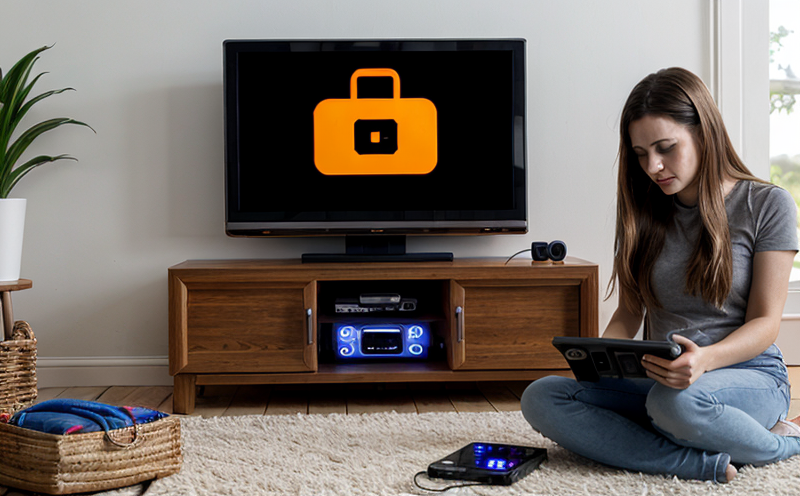Safety in Consumer Electronics: Understanding the Risks and Mitigating Measures
Consumer electronics have become an integral part of our daily lives, from smartphones to laptops, televisions to refrigerators. While these devices bring immense convenience and entertainment value, they also pose various safety risks if not used or maintained properly. In this article, we will delve into the safety concerns associated with consumer electronics and explore measures to mitigate them.
Electromagnetic Interference (EMI) and Radio-Frequency Electromagnetic Fields (RF-EMF)
What is EMI?: Electromagnetic interference occurs when an electromagnetic field from one device disrupts the functioning of another. Consumer electronics, such as cordless phones, microwaves, and televisions, can generate EMI.
Effects of EMI: Prolonged exposure to EMI has been linked to various health issues, including headaches, fatigue, and even increased risk of cancer. However, the International Commission on Non-Ionizing Radiation Protection (ICNIRP) states that the current evidence does not support a causal link between EMI and adverse health effects.
RF-EMF: Radio-frequency electromagnetic fields are emitted by devices such as mobile phones, Wi-Fi routers, and cordless phones. RF-EMF has been classified as possibly carcinogenic to humans by the International Agency for Research on Cancer (IARC).
Precautions against EMI and RF-EMF:
Keep electronic devices at a safe distance from your body.
Use headphones or speakerphones when using mobile phones or cordless phones.
Limit screen time and take regular breaks to reduce exposure.
Consider using shielding materials or products that absorb EMFs.
Cordless Phone Safety Concerns
RF-EMF emission: Cordless phones, also known as DECT (Digital Enhanced Cordless Telecommunications) phones, emit RF-EMF radiation when in use. This radiation can penetrate walls and affect people nearby.
Health risks: Prolonged exposure to RF-EMF from cordless phones has been linked to various health issues, including increased risk of cancer, headaches, and fatigue.
Mitigating measures:
Use a wired phone or switch to a DECT phone with a lower SAR (Specific Absorption Rate) value.
Limit use of cordless phones and take regular breaks.
Keep cordless phones at a safe distance from your body.
Protecting Against Electrical Shock and Fire Risks
Electrical shock: Improper use or maintenance of consumer electronics can lead to electrical shocks, which can cause serious injury or death.
Fire risks: Faulty or damaged cords, frayed wires, and overheating devices can ignite fires, resulting in property damage and potential loss of life.
Mitigating measures:
Regularly inspect your appliances and cords for signs of wear or damage.
Avoid overloading electrical outlets and use power strips with built-in surge protectors.
Keep flammable materials away from electronic devices.
Unplug appliances when not in use to prevent overheating.
QA Section:
Q: What are some common safety hazards associated with consumer electronics?
A: Common safety hazards include electromagnetic interference (EMI), radio-frequency electromagnetic fields (RF-EMF), electrical shock, and fire risks.
Q: How can I reduce my exposure to EMI from consumer electronics?
A: You can reduce your exposure by keeping electronic devices at a safe distance, using headphones or speakerphones, limiting screen time, and taking regular breaks.
Q: Are cordless phones safe to use?
A: Cordless phones emit RF-EMF radiation when in use. While the health risks are still being studied, it is recommended to limit their use and take precautions to minimize exposure.
Q: How can I protect against electrical shock and fire risks from consumer electronics?
A: Regularly inspect your appliances and cords for signs of wear or damage, avoid overloading electrical outlets, keep flammable materials away from electronic devices, and unplug appliances when not in use.
Q: What are some common myths about the safety of consumer electronics?
A: Some common myths include:
EMI has no health effects.
RF-EMF exposure is safe as long as you follow guidelines for usage.
Cordless phones do not emit significant amounts of RF-EMF radiation.
Q: What are some ways to ensure my child uses consumer electronics safely?
A: Teach your child the importance of proper use and maintenance of electronic devices, limit their screen time, and monitor their exposure to EMFs.
Q: Can I use consumer electronics in areas with poor air quality or water damage?
A: No, it is not recommended to use consumer electronics in areas with poor air quality or water damage. This can cause electrical shock, fire risks, and other safety hazards.
Conclusion
Consumer electronics have become an essential part of our daily lives, but they also pose various safety risks if not used or maintained properly. Understanding the risks associated with EMI, RF-EMF, electrical shock, and fire risks is crucial to mitigating these hazards. By taking precautions such as keeping electronic devices at a safe distance, limiting screen time, and regularly inspecting your appliances and cords for signs of wear or damage, you can minimize the risks associated with consumer electronics.

































